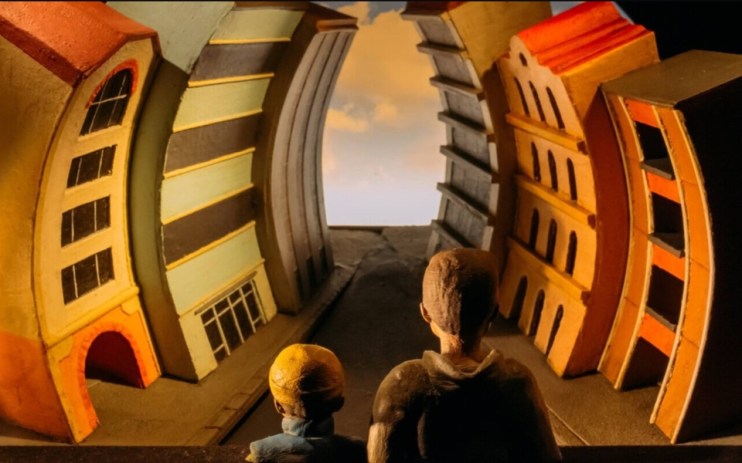Flight is a touching, socially distanced diorama play

As lockdown one bled into lockdown two, which quickly became lockdown three, theatre companies realised they were going to have to do something drastically different to keep audiences engaged and bring in a little income.
For some that meant socially-distanced recitals that could open and close without an outlay on sets and ensemble casts. Others went online, hosting evenings with cast and crew, while others still experimented with digital and audio plays. The Barbican and the Bridge Theatre decided to collaborate on bringing back 2017 audio play-cum-revolving diorama display Flight.
After passing through more security checks and holding spaces than your average international airport, you find yourself in the Bridge Theatre’s auditorium, where a black velvet-draped rotating stage is rimmed by private booths. After taking your seat and donning headphones, a series of tiny dioramas slowly pass before you, each one filled with lovingly carved – or more likely 3D printed – miniatures.
These dioramas, with the help of a narrator, tell the story of two young Afghan refugee boys as they make their way through Turkey, over to Greece, across Italy and France and attempt to pass into the UK.
Told from the perspective of the boys, there’s a sense of childlike wonder and terror to the events, which perfectly reflects the nostalgic feelings we tend to have towards “puppetry” and “toys”, terms that both fail to accurately capture the essence of Flight.
The story is familiar, filled with dangerous crossings, shady traffickers and jarringly brutal abuses, but it’s brought to life by the delicate little scenes that drift by just a few centimetres from your face.
Created by Vox Motus – “a theatre of story-telling visuals” – and adapted from Caroline Brothers’ novel Hinterland, the story is touching if a little predictable, while the voice performances are solid enough to carry you through the 45 minutes despite occasionally coming across a little too earnest. The real stars, though, are Rebecca Hamilton’s dioramas, which offer perspective-bending viewpoints into the “action” – although nothing ever actually moves – which feel intimate and a little voyeuristic. You’d be a monster if you don’t end up feeling for these kids, and for migrants as a whole.
As we move into a post-Covid world in which social distancing may end up being an intermittent presence in our lives, it’s good to know that storytellers will continue to find ways to reach us.
